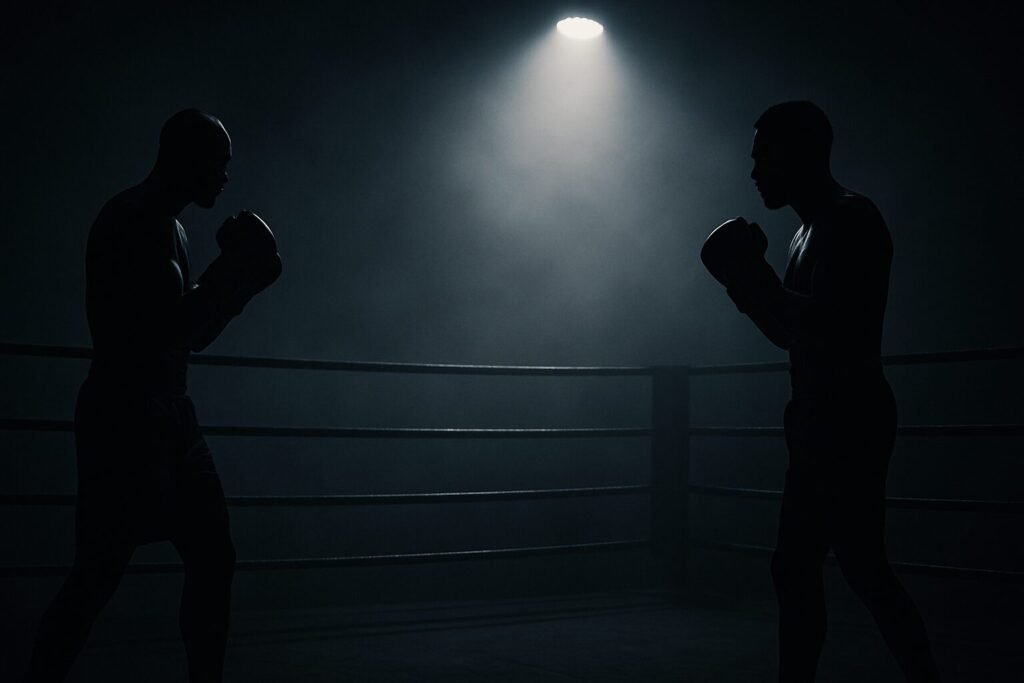Devin Haney has now completed his first outing at welterweight, and although the result went in his favour, the performance didn’t erase doubts about how he’ll cope in the new division. As soon as the scorecards dropped, attention drifted straight back to the conversation fans have been circling for months: the Haney Benn welterweight future and whether a collision between the pair is truly inevitable.
Conor Benn wants big names. Haney wants belts and credibility at 147. DAZN wants PPV traction. But after both men fought in November 2025 — just a week apart — the timeline for this fight suddenly looks very different.
For the breakdown of Haney’s welterweight debut, you can revisit the analysis here:
Devin Haney Welterweight Performance Analysis
Haney at Welterweight: Skill Still There, Authority Missing
Haney’s move to welterweight was unavoidable. He’d outgrown the lower weights, and the cut to 140 was becoming a problem. But while the jump made sense, the performance exposed new questions.
Haney looked sharp in moments: technically clean, smart in exchanges, and measured behind his jab. But the physical presence just wasn’t there. At 135 and 140, Haney could control fights on timing and distance alone. At 147, that doesn’t work the same way. Welterweights do not give you room to breathe; they make you earn it.
Haney couldn’t discourage his opponent with power. He didn’t look particularly sturdy under pressure. And although he won the rounds, he didn’t look like the sort of welterweight who can keep aggressive fighters honest for twelve rounds.
That’s where the Benn question becomes interesting.
Why Conor Benn Is a Serious Test for Haney’s Style
Conor Benn is built for the kind of fight Haney generally dislikes. Benn’s pressure comes in waves, he doesn’t second-guess himself, and he thrives in messy exchanges — the sort of sequences where Haney prefers not to be involved at all.
Where Haney wants rhythm, Benn wants disruption.
Where Haney wants range, Benn wants to collapse the space.
Where Haney wants control, Benn wants conflict.
That contrast has always made the Haney Benn welterweight future intriguing, but after Haney’s last performance, the gap between technical skill and physical pressure becomes even more relevant.
If Haney cannot earn respect at welterweight, Benn will force every uncomfortable question in the book:
- Can Haney take Benn’s right hand clean?
- Can he keep Benn off him across a full fight?
- Can he hold centre ring for long enough to win rounds?
- Does his power matter at 147?
Based on that last performance, the answer isn’t obvious — and if Haney boxed like that against Benn, he would be in serious trouble. My earlier assessment still stands: if Haney produced that version of himself in a Benn fight, eight rounds would be a generous prediction.
A Timeline Rooted in Reality: Why This Fight Cannot Happen Until Late 2026
Let’s get the calendar straight, because this matters.
- Conor Benn fought on 15 November 2025.
- Devin Haney fought on 22 November 2025.
That immediately rules out any possibility of either man boxing again in 2025. Medical suspensions, recovery, and the natural downtime after a fight mean both will sit out until the early part of 2026.
Once they return:
- Haney needs another welterweight bout to settle properly at the weight.
- Benn needs another fight to sharpen up and keep the Eubank rivalry fallout behind him.
- Negotiations will only begin once both have fought again.
- DAZN will require a long promotional build for a PPV of this size.
The realistic schedule is:
Early 2026:
Haney returns (March–April).
Benn returns (April–May).
Summer 2026:
Negotiations and promotional groundwork.
Autumn 2026:
The earliest viable date for Haney–Benn.
If anything slips — which boxing often does — the fight moves into early 2027 without hesitation.
There is no scenario where this fight lands earlier. Anyone claiming otherwise is ignoring how the sport actually works.
Does Haney Really Want Benn Next? The Honest Answer
The more you analyse it, the more you understand why the fight appeals to Benn and why Haney may approach it cautiously.
Haney’s strengths lie in his ability to dictate terms, pace, and rhythm. Benn removes all of that. The aggression, the explosiveness, the willingness to make things ugly — they all undermine Haney’s preference for control.
Haney’s biggest concern won’t be Benn’s boxing ability. It will be Benn’s ability to force an entirely different type of fight. And if Haney can’t keep welterweights off him, Benn becomes more than a dangerous opponent — he becomes a career-risking gamble at a time when Haney is still finding his feet in the division.
The question isn’t “Will Haney fight Benn?”
It’s “Will Haney fight Benn before he’s physically ready?”
Right now, the honest answer seems to be no.
Final Verdict: A Fascinating Future, But All Signs Point to Late 2026
The Haney Benn welterweight future is one of the most compelling subplots in boxing. It’s a style clash, a commercial win, and a rivalry that feels natural. But the timing is the real story here.
Both men have just boxed. Both need at least one more fight. Both need proper build-up. And both need to make sure the financial, political, and competitive timing is right.
Benn will enter this fight with confidence. Haney will enter with questions to answer. And that makes the eventual collision — when it finally comes in late 2026 or even early 2027 — more interesting than ever.
Your Turn: What Happens When They Finally Meet?
What do you think? Does Haney adapt to welterweight in time, or does Benn’s pressure overwhelm him the moment they share a ring?
Share your thoughts, pass this around, and head over to CMBoxing for more weekly opinion pieces, breakdowns and updates on the biggest stories in the sport.

